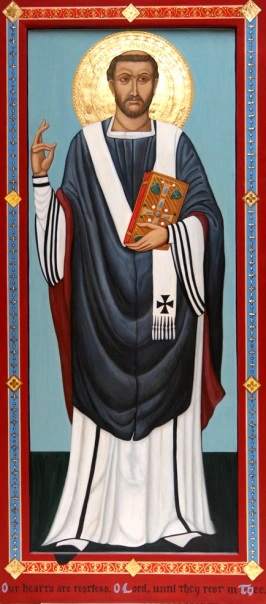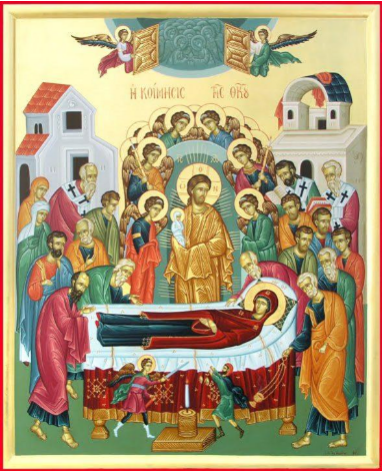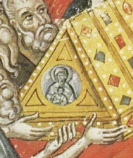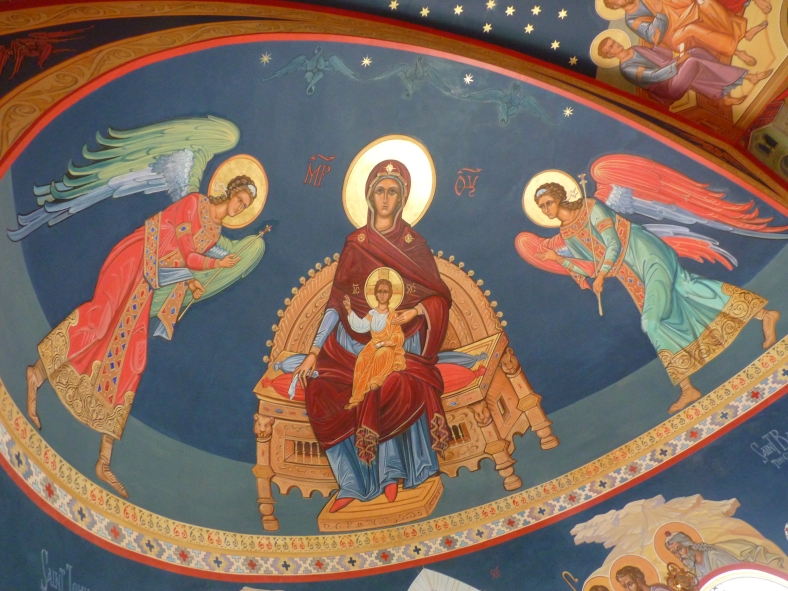 Now we come to one of my favorite parts of our ongoing discussion about how the Church perceives the Ark of the Covenant. In the works of Saint Ephrem, a contemporary of Saint Athanasius, we find the most poignant expression of this typology to date. Saint Ephrem’s poetic genius strikingly and undeniably expresses the beauty of the typology. Saint Ephrem references this typology multiple times. Below are two of the most interesting references.
Now we come to one of my favorite parts of our ongoing discussion about how the Church perceives the Ark of the Covenant. In the works of Saint Ephrem, a contemporary of Saint Athanasius, we find the most poignant expression of this typology to date. Saint Ephrem’s poetic genius strikingly and undeniably expresses the beauty of the typology. Saint Ephrem references this typology multiple times. Below are two of the most interesting references.
With the weapon of the deceiver the First-born clad Himself, that with the weapon that killed, He might restore to life again! With the tree wherewith he slew us, He delivered us. With the wine which maddened us, with it we were made chaste! With the rib that was drawn out of Adam, the wicked one drew out the heart of Adam. There rose from the Rib a hidden power, which cut off Satan as Dagon: for in that Ark a book was hidden that cried and proclaimed concerning the Conqueror! There was then a mystery revealed, in that Dagon was brought low in his own place of refuge! The accomplishment came after the type, in that the wicked one was brought low in the place in which he trusted! Blessed be He Who came and in Him were accomplished the mysteries of the left hand, and the right hand. Fulfilled was the mystery that was in the Lamb, and fulfilled was the type that was in Dagon.1
In this cryptic passage, St. Ephrem begins by enumerating weapons by which the devil attacked humanity: flesh, wood, wine, and woman. For each item in his enumeration he alludes to how the devil used it as a weapon and God used it for salvation. The climax of his enumeration is the woman. Out of the female half of the race, God brought forth a hidden power, the Holy Virgin Mary. Mary is the antitype of the Ark that destroyed the idol of Dagon when the Philistines captured the Ark and housed it in the temple of Dagon (1 Samuel 5:1–7). In the Ark, as in the Virgin, was a book. The book, or tablets of stone, is a type of the only begotten Son and Word of God. The human race fell through the woman, but through the woman the human race was raised up and the wicked one was brought low. Each of the tools used as weapons by the devil contributed to his undoing and thus the typology behind the story of Dagon is revealed: the devil was brought low in the place in which he trusted.
In another passage, St. Ephrem uses juxtaposition to call out the typology. The woman ministers before the man by nature of his headship. Likewise, Joseph ministered before Mary because in her was the Son of God. The last sentence juxtaposes this with the priestly ministry before the Ark. Just as the priest ministered before the Ark because God was present in it, Joseph ministered before Mary. Thus the Ark typifies Mary.
The woman ministers before the man, because he is her head. Joseph rose to minister before his Lord, Who was in Mary. The priest ministered before Your ark by reason of Your holiness.2
In our next post in this series, we will examine what both Saints Ambrose and Augustine contributed to this discussion.
1 Saint Ephrem, Hymns on the Nativity, Trans. J.B. Morris (Hymn nos. 1-13) and A. Edward Johnston (Hymn nos. 14-19), in Nicene and Post-Nicene Fathers, Second Series, Vol. 13, ed. Philip Schaff and Henry Wace, (Buffalo, NY: Christian Literature Publishing Co.,1898), revised and edited for New Advent by Kevin Knight, hymn 3.
2Ibid., hymn 11.
 Saint Ambrose, living from 340-397, provides perhaps the clearest “rationale” for seeing the Ark as a type of Mary. He draws a number of parallels between the Ark and the Virgin in which those applied to the Virgin exceed those of the Ark. He contrasts the Law with the Gospel, the voice of God with the Word of God, and the glitter of gold with the splendour of virginity.
Saint Ambrose, living from 340-397, provides perhaps the clearest “rationale” for seeing the Ark as a type of Mary. He draws a number of parallels between the Ark and the Virgin in which those applied to the Virgin exceed those of the Ark. He contrasts the Law with the Gospel, the voice of God with the Word of God, and the glitter of gold with the splendour of virginity. Saint Augustine, living from A.D. 354-430, seems to be one of the few among his contemporaries who holds the Ark to be a type of the Church as the body of Christ rather than a type of the Virgin Mary. The very passage that Saint Gregory Thaumaturgus earlier interpreted as speaking of the Holy Virgin, Augustine interprets as referring to the Church.
Saint Augustine, living from A.D. 354-430, seems to be one of the few among his contemporaries who holds the Ark to be a type of the Church as the body of Christ rather than a type of the Virgin Mary. The very passage that Saint Gregory Thaumaturgus earlier interpreted as speaking of the Holy Virgin, Augustine interprets as referring to the Church.  In our
In our  Saint John, born in A.D. 676, wrote the famous Canon of Pascha that is sung during the Orthodox Pascha services. In the Canon, Saint John doesn’t seem to commit to a specific typological relationship for the Ark. His intention seems to be to expose the contrast between human experience of the types and human experience of the fulfillment.
Saint John, born in A.D. 676, wrote the famous Canon of Pascha that is sung during the Orthodox Pascha services. In the Canon, Saint John doesn’t seem to commit to a specific typological relationship for the Ark. His intention seems to be to expose the contrast between human experience of the types and human experience of the fulfillment. The feast of the entrance recalls our previous
The feast of the entrance recalls our previous  The Dormition of the Theotokos is perhaps the most explicit of the feasts of the Church when articulating the typology of the Ark of the Covenant. In one set of troparia, the story of the Dormition as related by
The Dormition of the Theotokos is perhaps the most explicit of the feasts of the Church when articulating the typology of the Ark of the Covenant. In one set of troparia, the story of the Dormition as related by 
 Iconography depicting the Ark almost universally incorporates an emblem of the Theotokos upon the Ark itself. In the 16th century icon of the exaltation of the Ark by Master Theophane of Crete above, you see a circular emblem depicting the Theotokos both on the end of the Ark and at the end of the table upon which the Ark rests. You can see a closeup of the emblem on the Ark at right.
Iconography depicting the Ark almost universally incorporates an emblem of the Theotokos upon the Ark itself. In the 16th century icon of the exaltation of the Ark by Master Theophane of Crete above, you see a circular emblem depicting the Theotokos both on the end of the Ark and at the end of the table upon which the Ark rests. You can see a closeup of the emblem on the Ark at right.


 The photo on the right from the
The photo on the right from the 